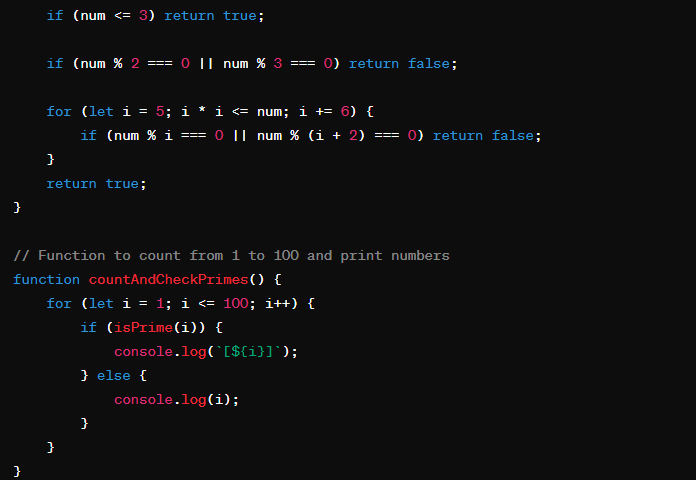EEPROM (Electrically Erasable Programmable Read-Only Memory) is a non-volatile memory type found on most Arduino boards. It allows you to store data even when the power is disconnected, making it suitable for settings, calibration values, or other data that needs to be retained. Here’s a guide on how to use it: Understanding EEPROM Non-Volatile: Data persists even after power off. Limited Writes: EEPROM has…
View More How to Store Data on EEPROM with ArduinoCategory: Programming
Mastering WordPress Image Optimization: A Deep Dive for Advanced Users
Images are the lifeblood of many WordPress websites, but they can also be a major drag on performance. In this comprehensive guide, we’ll go beyond basic optimization tips and delve into advanced techniques to ensure your images look stunning without sacrificing loading speed. Choosing the Right Image Format While JPEGs are commonly used for photographs, they often contain unnecessary data, resulting in larger file…
View More Mastering WordPress Image Optimization: A Deep Dive for Advanced UsersUnveiling Micropython’s Potential: An Advanced Overview
Unveiling Micropython’s Potential: An Advanced Overview Micropython, a lean and efficient implementation of the Python 3 programming language, has garnered immense popularity for resource-constrained microcontrollers and embedded systems. This article delves deeper into the advanced capabilities of Micropython, empowering developers to harness its full potential. Memory Management and Garbage Collection Micropython employs a mark-and-sweep garbage collector to reclaim unused memory dynamically. Understanding its behavior…
View More Unveiling Micropython’s Potential: An Advanced OverviewUnlocking the Language of Code: A Beginner’s Guide to Syntax
Imagine trying to bake a cake by throwing ingredients together without a recipe. Chaos, right? That’s what coding without understanding syntax is like. Syntax is the set of rules that dictate how you write code in a specific programming language, much like grammar rules in English. It’s the difference between a computer understanding your instructions and spitting out errors. Why is Syntax Important? Computers…
View More Unlocking the Language of Code: A Beginner’s Guide to SyntaxMicropython Concurrency: Mastering Timers and Interrupts
Micropython Concurrency: Mastering Timers and Interrupts Concurrency in Micropython, especially on resource-constrained microcontrollers, can be a powerful tool. While true threading isn’t directly supported, Micropython offers clever alternatives: Timers and Interrupts. Let’s explore how to leverage them effectively. Understanding the Basics Timers: Think of timers as scheduled events. You program them to trigger a function call after a specific time interval or at a…
View More Micropython Concurrency: Mastering Timers and InterruptsMastering Functional Composition: A Deep Dive for Advanced Programmers
Functional composition is a powerful technique that allows you to combine simple functions to build more complex ones. This approach leads to more readable, reusable, and maintainable code. This article delves into advanced aspects of functional composition, exploring techniques that can elevate your programming skills. Understanding Higher-Order Functions A key concept in functional composition is the use of higher-order functions. These are functions that…
View More Mastering Functional Composition: A Deep Dive for Advanced ProgrammersMastering Asynchronous JavaScript: A Deep Dive into Promises
Asynchronous JavaScript is the backbone of modern web development, allowing us to build responsive and dynamic applications. One of the key concepts to master in asynchronous programming is Promises. Understanding Promises A Promise in JavaScript represents the eventual outcome of an asynchronous operation. It’s like a placeholder for a value that will be available in the future, either resolved (successful) or rejected (failed). Creating…
View More Mastering Asynchronous JavaScript: A Deep Dive into PromisesMastering Dependency Injection in Java: A Practical Guide
Dependency injection (DI) is a fundamental concept in software engineering, particularly valuable in object-oriented programming. It promotes modularity, testability, and maintainability by decoupling the creation and management of objects within an application. This article delves into the practical implementation of DI in Java, providing a clear path to understanding and leveraging its power. Understanding Dependency Injection At its core, DI is about delegating the…
View More Mastering Dependency Injection in Java: A Practical GuideUnderstanding Function Parameters in Programming: A Beginner’s Guide
Understanding Function Parameters in Programming: A Beginner’s Guide In the world of programming, functions are like reusable blocks of code that perform specific tasks. To make these functions more versatile and adaptable to different situations, we use parameters. Think of parameters as placeholders for values that you can pass into a function when you call it. What are Parameters? Imagine a function that calculates…
View More Understanding Function Parameters in Programming: A Beginner’s GuideGetting Started with SPI Communication: A Beginner’s Guide
SPI, or Serial Peripheral Interface, is a synchronous communication protocol commonly used to connect microcontrollers to peripherals like sensors, displays, and memory chips. This guide will walk you through the basics of SPI and help you get started with your first SPI project. Understanding SPI SPI relies on a master-slave architecture, where a master device initiates the communication and controls the data flow. The…
View More Getting Started with SPI Communication: A Beginner’s Guide





